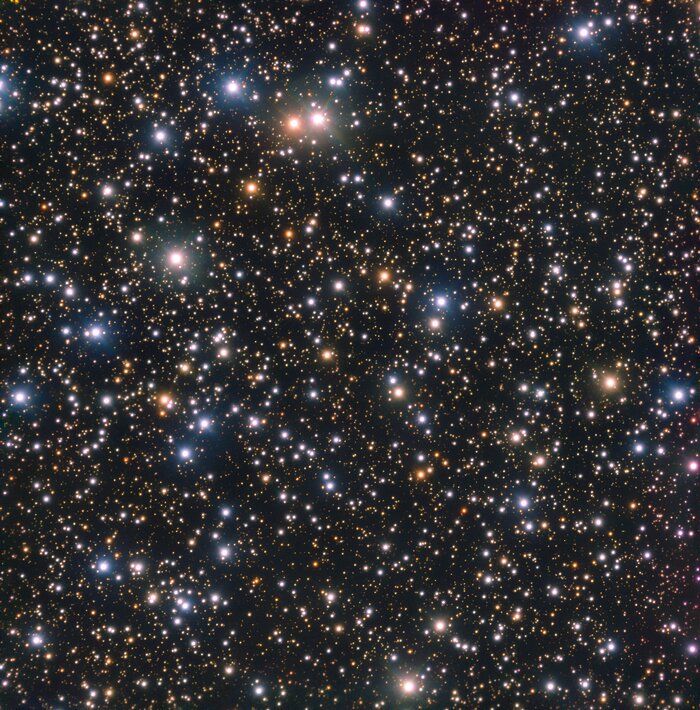Unassuming beauty
This beautiful image, captured with the FOcal Reducer and low dispersion Spectrograph (FORS) on ESO’s Very Large Telescope (VLT), shows a field of stars of all ages — some looming close in the foreground, and others lurking in the far distance. The distinct red and blue hues are thanks to the use of filters, which allow the selection of specific wavelength ranges of light. The images collected with different filters can be combined in order to create colourful composite images: by assigning a particular color to each filter; colouring the images according to the filter used; then combining the separate images. The result is a spectacular image which colourfully represents the various wavelengths of light.
This patch of sky is found in the constellation of Crux (The Southern Cross), an extremely bright section of the Milky Way. It was imaged as part of the ESO Cosmic Gems programme, an outreach initiative to produce images of interesting, intriguing or visually attractive objects using ESO telescopes, for the purposes of education and public outreach. The programme makes use of telescope time that cannot be used for science observations. All data collected may also be suitable for scientific purposes, and are made available to astronomers through ESO’s science archive.
Credit:ESO
About the Image
| Id: | potw2027a |
| Type: | Observation |
| Release date: | 6 July 2020, 06:00 |
| Size: | 1702 x 1726 px |
About the Object
| Name: | Crux Constellation |
| Type: | Unspecified : Star |
| Constellation: | Crux |
| Category: | Stars |
Wallpapers
Coordinates
| Position (RA): | 12 50 22.98 |
| Position (Dec): | -60° 35' 3.92" |
| Field of view: | 7.15 x 7.25 arcminutes |
| Orientation: | North is 0.0° right of vertical |
Colours & filters
| Band | Wavelength | Telescope |
|---|---|---|
| Optical b | 440 nm | Very Large Telescope FORS2 |
| Optical v | 557 nm | Very Large Telescope FORS2 |
| Optical R | 655 nm | Very Large Telescope FORS2 |
| Optical H-alpha | 660 nm | Very Large Telescope FORS2 |

